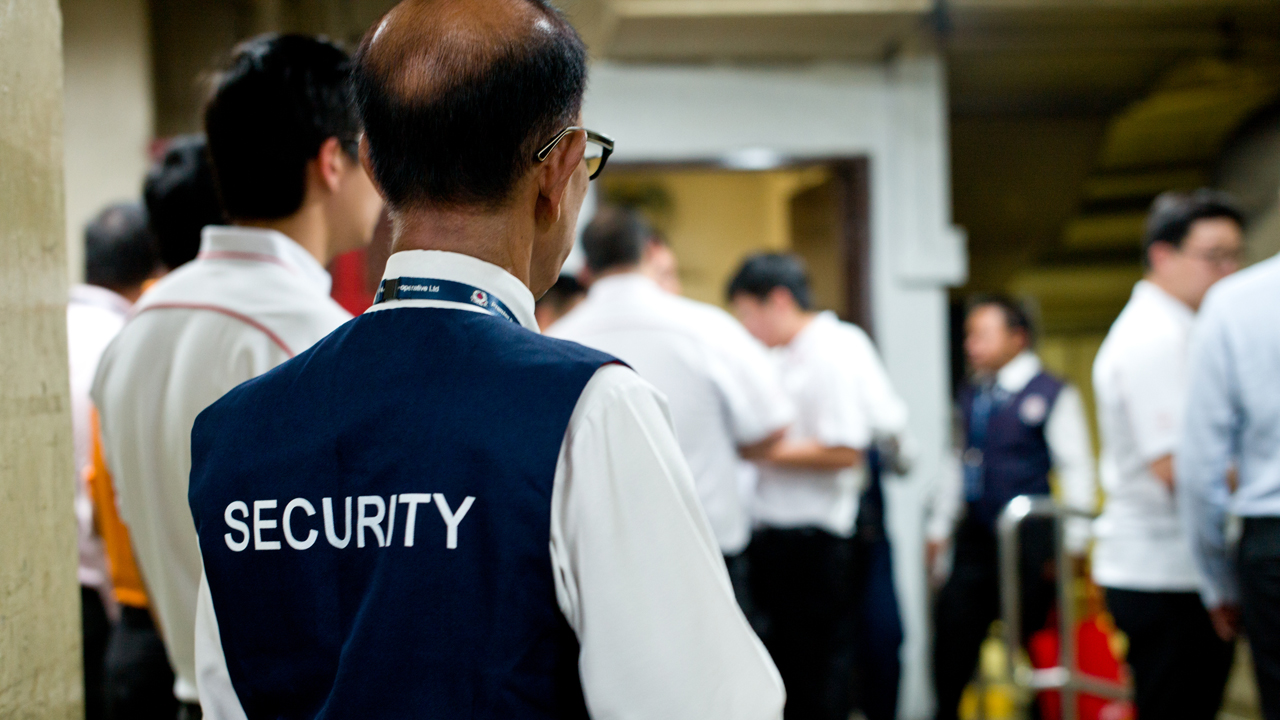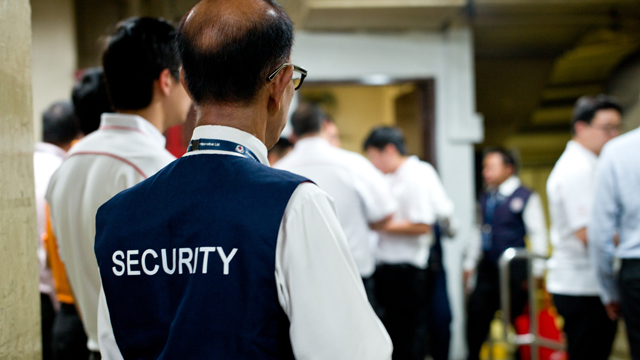The September 11 attacks in 2001 marked a tipping point for the security industry as it subsequently led to a huge increase in demand for more professional security services. Gone were the days where any Tom, Dick and Harry could be a `Jaga’ guarding the entrance of a multi-million dollar building overnight, armed with a radio, straw mat and a flask of hot coffee.
Here in Singapore, tremendous efforts have been made to inject greater professionalism into the industry efforts which are strongly supported by the union, government, security associations and other stakeholders. One key example is the requirement of mandatory screening and basic training before one can be issued with a security licence. Tighter industry regulation, overseen by the Police Licensing and Regulatory Department (PLRD) under Ministry of Home Affairs, was also introduced to set standards and ensure our nation’s security needs are met.
PWM to be incorporated into licensing regime
Continuing the efforts to improve the industry, there will be a change in licensing conditions in the near horizon and it will greatly impact the unarmed security industry. It will require all security agencies to pay their unarmed security officers salaries stipulated in the Progressive Wage Model (PWM), as recommended by the Security Tripartite Cluster (STC), by 1 September 2016 – the industry’s D-Day. The PWM aims to scale up the industry’s professionalism, pegging officers’ wages that commensurate with skills, career and productivity. The underlying premise is that through PWM, our security workforce would be better-trained and more motivated, bringing about better quality of services and enhancing the overall professionalism of the sector.
But one may wonder: just how ready is the industry for this wave of change? Based on preliminary estimates of security manpower requirements, while many of the security officers fulfill the prerequisite training requirement, there are still about 3,300 security supervisors who do not.

Efforts to ensure uniform adoption of PWM
Since the launch of PWM in 2014, the STC has been working together with the various agencies to prepare the industry for this transformation. Information on PWM has been aggressively disseminated to security agencies and officers. The Union of Security Employees (USE) also shifted into full gear and has been actively engaging its members and management partners even before PWM was formalised. Since the idea of PWM was mooted in 2014, no effort has been spared to ensure sufficient training capacity for security officers and supervisors to complete their necessary training courses and advance on both the career progression and wage ladder. However, according to the accredited training providers, the training capacity has not been fully utilised and many places are still available.
On the ground, there has been feedback that many security supervisors are unwilling to attend skills upgrading courses despite their lack of the necessary skills qualifications to perform roles with greater responsibilities. Come 1 September 2016, these security supervisors will face serious risk of being emplaced to a lower rank.
To address the situation, PLRD has taken a step further to send personalised letters on emplacement to officers who need to fulfill the necessary training requirements to retain or upgrade their current positions after PWM comes into force. Recognising that there are experienced security officers, the Singapore Workforce Development Agency (WDA) has developed Assessment-Only-Pathways (AOP) to help them obtain the necessary qualifications without having to attend the training modules. Flexible training delivery such as weekend classes, bite-sized modules and on-site training at the trainees’ locations have also been introduced. Special coaching sessions by training organisations have also been made available to help officers, especially for those who would like to become security supervisors and better prepare for the assessment. Video tutorials and step-by-step guidelines by Singapore Police Force, Employment and Employability Institute (e2i) and WDA have been issued to assist security agencies in preparing their officers for the AOPs.
In fact, to encourage more experienced security officers to attain the necessary qualifications via the AOP route, e2i has been providing funding to the first 2,000 workers who undergo the AOP. Funding is provided at up to 90 per cent of the assessment fee. To qualify for the grant, workers had to be enrolled by their companies before 30 April 2016 and to complete the assessment by 30 July 2016. I encourage those who have enrolled for the course to duly complete the assessment and fulfill their requirements soon.
No room for non-compliance
PLRD, with the support of STC, will stand its ground from D-Day and will not hesitate to take actions against non-compliant security agencies. Hence on D-Day, security officers will be standing on thin ice if they claim that they are unaware of the PWM requirements or are unable to attend training courses due to unavailability of training places. Even if they have signed up for the relevant courses but could only meet the requirements after D-Day, they will not be able to perform their role of security supervisors and are at risk of being emplaced to a lower until they complete the necessary trainings.
Security agencies may also claim that they are unable to meet their contractual obligations as they do not have sufficient supply of certain ranks or categories of security officers, in particular, security supervisors. This excuse may no longer hold water since concerted efforts have been ploughed in by USE, Association of Certified Security Agencies (ASCA), Security Association of Singapore (SAS), as well as PLRD. They have been engaging security agencies and playing up the importance of training their officers before the legislation kicks in. PWM was first announced on October 2014, two years well before the licensing condition kicks in and no stone has been left unturned to inform all security agencies of this requirement. Hence, service providers are expected to have sent their officers for all the necessary training courses as they have been given ample time to sort out their business’ operational needs and workers’ training schedules.
Unfortunately, according to a player in the industry, many security agencies expressed concern over competition. Agencies worry that after sending their officers for training, they will be poached by competitors and hence decided to adopt a ‘wait-and-see’ attitude. Clearly, I am disheartened with their thoughts. Unless the security agencies get their act together and not undermine each other’s efforts, it may be a real challenge to professionalise the industry as a whole.
There are, of course, genuine cases of security agencies wanting to send their officers for training but are faced with uncooperative service buyers. Security buyers need to realise that it is in their interest to work with the service providers and ensure that there are sufficient security officers with the relevant skills for smooth operations at the job site. Security buyers should play their part and work closely with their incumbent security agencies to facilitate the training of security officers.

Betterment of security guards requires mindset change
Moving forward, perhaps it is also time for service buyers and service providers to explore new possibilities together. What we really need is a mindset change; the sector and its stakeholders have to move away from a ‘man-driven’ approach to one that embraces effective machines and methods to deliver more productive services.
One way is to look at a model of aggregating services, which was an aspect Labour Chief Chan Chun Sing mentioned in his earlier blog post. Technological advancements now give us the option of deploying centralised supervision of properties, without the need to employ ‘warm bodies’ on site. These officers can instead be trained to take on other value-adding roles. Other developed countries have embraced such technological advancements and made it work, so why not us? The question is: are industry stakeholders willing to put their hearts and minds to it?
It is said that “Too many security officers live day to day. They just want to be treated with dignity.” From a recent survey of 400 officers, close to 90 per cent said they felt a sense of pride in their jobs. To me, this is an encouraging sign, that the industry’s toil to make their lives better and refine the sector’s image is paying off.
This move with PWM is the next wave. Everyone involved in the industry must do the necessary to make the coming D-Day a non-event. This would mean all security officers are paid according to PWM and with the necessary skill sets to perform the job functions required at the site.
We are bent on levelling up the playing field for our workers in the security sector, which is why we are advocating for a better and more highly trained workforce through the PWM. Beyond all these efforts put together by the STC, there may still be officers who miss the boat and are not trained adequately and risk suffering a pay cut after 1 September. This initiative is for the betterment of our officers and their best interests are our key agenda. Should any officer face a pay cut, I urge him or her to contact the Union of Security Employees. The union will be able to match the affected worker to socially responsible security agencies who will hire with a heart.
I do not want D-Day to be remembered as a solemn day because the industry failed to ride on the next wave. It should be a day that marks the start of a new chapter of professionalism for the industry.
If you are in the security industry, are you armed with conviction for D-Day?
Zainal Sapari
This is a post by National Trades Union Congress (NTUC) Assistant Secretary-General Zainal Bin Sapari. Any extracts should be attributed back to the author. 12 May 2016.

